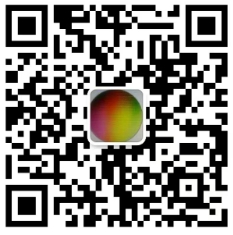UART (Universal Asynchronous Receiver Transmitter) is a widely used hardware communication protocol that enables asynchronous serial communication between devices. It is integral to embedded systems, microcontrollers, and various electronic devices for data transmission. The core functionalities of UART include:
1. Asynchronous Communication: Unlike synchronous protocols, UART does not require a clock signal for synchronization. Instead, it uses start and stop bits to frame the data, allowing devices to communicate without a shared clock.
2. Data Framing: Data is transmitted in frames, typically consisting of a start bit, a defined number of data bits (usually between 5 to 9), an optional parity bit for error checking, and one or more stop bits to signal the end of the transmission.
3. Full-Duplex Communication: UART supports simultaneous transmission and reception of data, enabling full-duplex communication, which is essential for many applications.
4. Baud Rate: The speed of data transmission is defined by the baud rate, which indicates the number of signal changes (symbols) per second. Common baud rates include 9600, 115200, and others, depending on the application requirements.
| 1. Data Transmission and Reception | |
| 2. Error Detection | |
| 3. Flow Control | |
| 4. Configuration | |
| 5. Interrupts and Buffers | |
| 1. Microcontroller Communication | |
| 2. GPS Module Integration | |
| 3. Wireless Communication | |
| 4. Debugging and Logging | |
| 5. Industrial Automation |
UART remains a fundamental technology in serial communication, offering simplicity and effectiveness across a wide range of applications. Its versatility in fields such as consumer electronics, industrial automation, and IoT highlights its importance in modern embedded systems. Understanding the core functionalities and practical applications of UART can significantly enhance the development of reliable and efficient communication systems, making it a critical component in the design of electronic devices.
UART (Universal Asynchronous Receiver Transmitter) is a widely used hardware communication protocol that enables asynchronous serial communication between devices. It is integral to embedded systems, microcontrollers, and various electronic devices for data transmission. The core functionalities of UART include:
1. Asynchronous Communication: Unlike synchronous protocols, UART does not require a clock signal for synchronization. Instead, it uses start and stop bits to frame the data, allowing devices to communicate without a shared clock.
2. Data Framing: Data is transmitted in frames, typically consisting of a start bit, a defined number of data bits (usually between 5 to 9), an optional parity bit for error checking, and one or more stop bits to signal the end of the transmission.
3. Full-Duplex Communication: UART supports simultaneous transmission and reception of data, enabling full-duplex communication, which is essential for many applications.
4. Baud Rate: The speed of data transmission is defined by the baud rate, which indicates the number of signal changes (symbols) per second. Common baud rates include 9600, 115200, and others, depending on the application requirements.
| 1. Data Transmission and Reception | |
| 2. Error Detection | |
| 3. Flow Control | |
| 4. Configuration | |
| 5. Interrupts and Buffers | |
| 1. Microcontroller Communication | |
| 2. GPS Module Integration | |
| 3. Wireless Communication | |
| 4. Debugging and Logging | |
| 5. Industrial Automation |
UART remains a fundamental technology in serial communication, offering simplicity and effectiveness across a wide range of applications. Its versatility in fields such as consumer electronics, industrial automation, and IoT highlights its importance in modern embedded systems. Understanding the core functionalities and practical applications of UART can significantly enhance the development of reliable and efficient communication systems, making it a critical component in the design of electronic devices.










